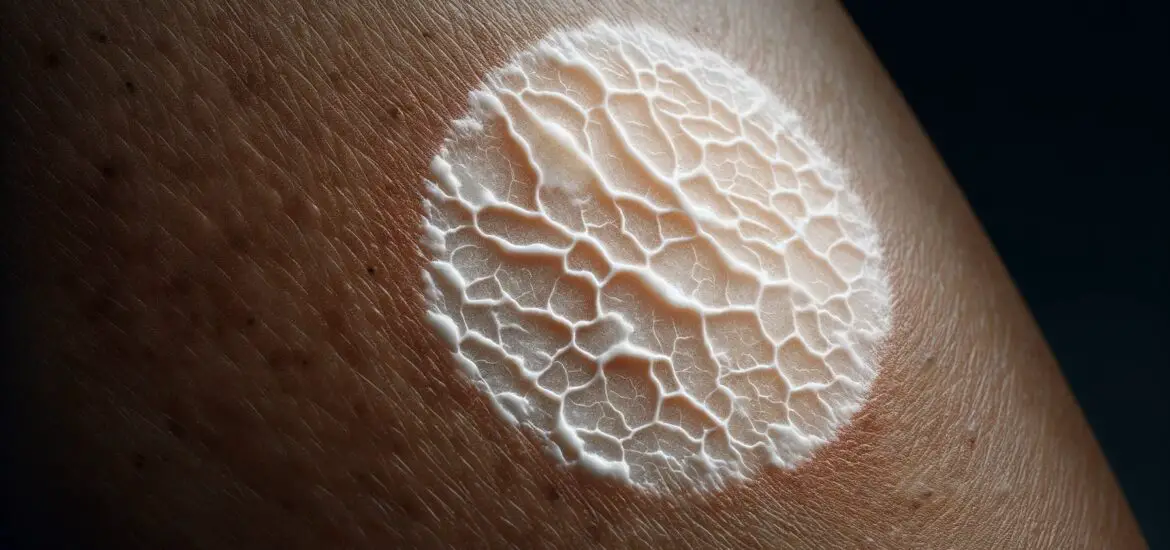This comprehensive guide will walk you through the reasons behind white patches on skin after laser treatment, preventative measures against this issue, and effective ways to address them.

Table of Contents
Understanding White Patches on Skin After Laser Treatment
White patches, or hypopigmentation, post-laser treatment are areas where the skin has lost its pigment. Laser treatments work by targeting pigments in the skin, but sometimes they can also affect surrounding areas. This can lead to a reduction in melanin, the pigment that gives skin its color.
Different laser treatments have varying effects, with some like intense pulsed light (IPL) and ablative lasers having higher incidences of hypopigmentation. Understanding the specific laser technology used and its potential effects on different skin types is crucial.
This phenomenon is particularly noticeable in individuals with darker skin tones, as the contrast between the treated and untreated areas is more pronounced.
Causes of White Patches on Skin After Laser Treatment
The causes of white patches after laser treatment can be multifaceted. Key factors include the type of laser used, the depth of laser penetration, the individual’s skin type, and the area of the body being treated. Some lasers are more aggressive and penetrate deeper into the skin, which can disrupt more melanocytes (pigment-producing cells).
In addition, certain areas of the body, like the face and neck, may be more sensitive to laser treatments. The patient’s skin type also plays a significant role; those with darker skin have more active melanocytes, which can react differently to the laser’s energy.
Pre-existing skin conditions, such as vitiligo or a history of keloid scarring, can also influence the likelihood of developing white patches.
Treatment and Management of White Patches on Skin After Laser Treatment
Managing white patches after laser treatment involves a combination of strategies. If hypopigmentation occurs, treatments may include topical creams like corticosteroids or calcineurin inhibitors, which can sometimes help stimulate pigment production.
In some cases, further laser treatments using different wavelengths or settings may be recommended. It’s important to have realistic expectations, as treatment efficacy can vary and some cases may not respond to treatment.
Patience is key, as skin response to treatment can take time. It’s also vital to maintain a healthy skincare routine, keeping the skin moisturized and protected from excessive sun exposure.
In cases where hypopigmentation is extensive or persistent, consulting a specialist in dermatology or cosmetic skin treatments is advisable for more advanced treatment options.
You can read this study on the successful treatment of laser-induced hypopigmentation.
Preventative Measures Against White Patches on Skin After Laser Treatment
To minimize the risk of developing white patches, several preventative measures can be taken. Firstly, choosing an experienced and qualified dermatologist or laser treatment specialist is crucial. They can assess the skin type and select the most appropriate laser setting. It’s important to discuss any previous skin reactions or conditions with your provider.
In addition, following a strict pre-treatment skincare routine, such as avoiding sun exposure and using sunblock, can help prepare the skin. You can get this Neutrogena Beach Defense SPF 70 Sunscreen Lotion from Walmart.
Post-treatment, it’s essential to continue protecting the skin from the sun and follow any specific care instructions given by the healthcare provider.
Using gentle skincare products and avoiding harsh chemicals or abrasive treatments on the treated area can also aid in preventing hyperpigmentation.
When to Seek Medical Advice
If you notice white patches developing after laser treatment, it’s advisable to seek medical advice promptly. This is particularly important if the patches are spreading, causing discomfort, or if you have concerns about the appearance of your skin.
A healthcare professional can assess the severity of the hypopigmentation and provide personalized treatment options. It’s also important to seek advice if you have a history of skin conditions or have experienced adverse reactions to skin treatments in the past. Early intervention can often lead to better management and outcomes of post-laser hyperpigmentation.

